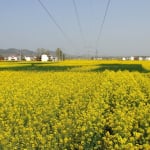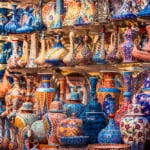Name: Bongeunsa Temple
Address: 73 Samseong-dong, Gangnam-gu, Seoul, Republic of Korea
Official/Related Site URL: http://www.bongeunsa.org/index.asp
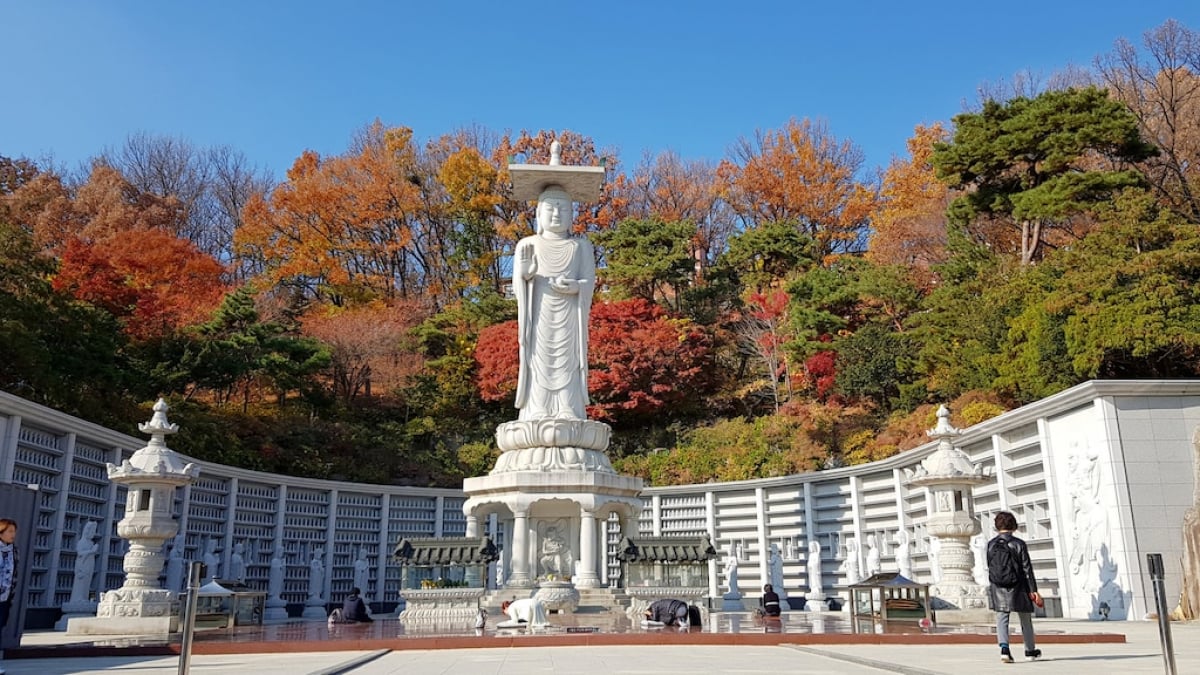
Bongeunsa Temple, an Unmissable Historic Temple in Seoul’s Gangnam
Bongeunsa is a temple located in Gangnam, Seoul, South Korea. Gangnam is lined with high-rise buildings and is also home to the massive complex “COEX.” Bongeunsa serves as an oasis and a spiritual power spot in the middle of this bustling metropolis. Except for late at night, it is open for visitors during the day. Here, we’ll introduce the highlights of Bongeunsa, where you can explore its 20 temple buildings, see the Maitreya Great Buddha, and experience a temple stay.
table of contents
[x] close
Bongeunsa Temple, an Unmissable Historic Temple in Seoul’s Gangnam
1. Bongeunsa Temple — One of Seoul’s Leading Power Spots
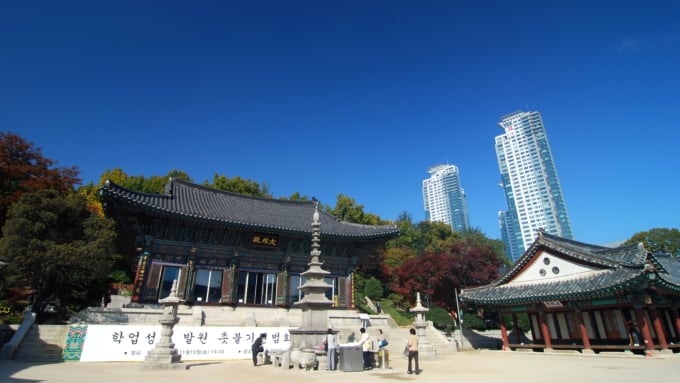
Bongeunsa is one of Korea’s representative temples, boasting both tradition and scale, and following the Zen Buddhist tradition. Despite being surrounded by Gangnam’s modern high-rise buildings, its quiet and spacious grounds make you forget you are in a big city. The temple was first founded in 794 by a high monk of the Silla Kingdom under the name “Gyeonseongsa.”
Time passed, and in 1498, during the reign of the 9th king of the Joseon Dynasty, King Seongjong, it began to be used as a royal temple to guard his tomb, Bongneung, and its name was changed to Bongeunsa. Although Bongeunsa has a long history, many of the current buildings were rebuilt after the originals were destroyed in a fire in 1939. Today, it is well known as a spiritual power spot and attracts many worshippers and tourists.
Anyone can tour the temple grounds during the day, except late at night. Near the entrance, there is a Buddhist goods shop (temporarily relocated behind the restroom due to construction until May 12, 2019) and a restroom designed to blend with the temple’s atmosphere (a clean flush toilet).
2. Highlights of Bongeunsa: 20 Temple Buildings and the Maitreya Great Buddha
Bongeunsa has 20 temple buildings (garan). “Garan” refers to the structures within a temple. Here are some of the main ones:
■ Jinyeomun Gate
This is the entrance gate to the temple. On either side are wooden statues of the Four Heavenly Kings — Dhṛtarāṣṭra, Virūḍhaka, Virūpākṣa, and Vaiśravaṇa — which are designated as Seoul City Tangible Cultural Properties.
■ Daeungjeon Hall
Rebuilt in 1982, this is the main hall of the temple. Inside the Dharma Hall, there is a triple-tiered canopy, with Shakyamuni Buddha enshrined at the center as the principal deity, Amitabha Buddha on the left, and the Medicine Buddha on the right.
■ Seonbul-dang Hall
Built in the hip-and-gable style with four small gable roofs, this building was used for monk examinations during the Joseon Dynasty. It is designated as a Seoul City Tangible Cultural Property and is open for free viewing.
■ Maitreya Great Buddha
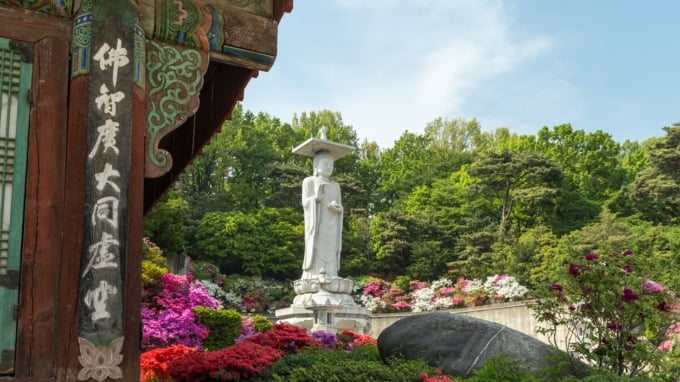
Built over ten years with the cooperation of about 10,000 believers, it was completed in 1996. Standing 23 meters tall, it is the largest Maitreya statue in Korea. The plaza between the Great Buddha and the Maitreya Hall is usually used for prayers, but it also hosts celebratory and cultural events.
■ Yeongsan-jeon Hall
This hall enshrines Shakyamuni as the principal Buddha along with 16 Arhat statues. Many believers come here to pray for the spiritual benef
3. For a Unique Experience, Try a Temple Stay!
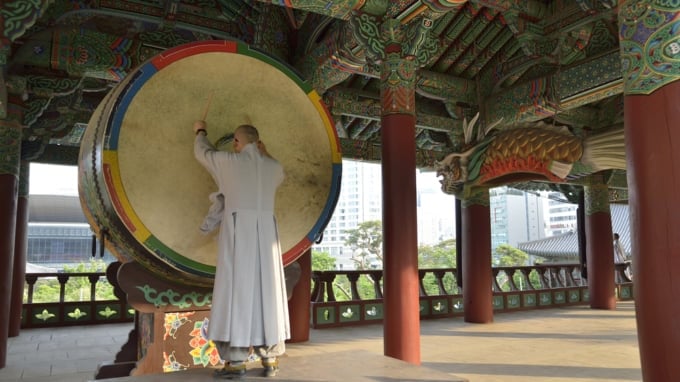
Bongeunsa offers “Temple Stay” programs, allowing visitors to experience the lifestyle of Buddhist monks. Many tourists, both domestic and international, participate. There are two types of programs: the one-day program for temple tours, meditation, and tea ceremonies, and the 1-night, 2-day program with overnight temple lodging. (Photos are for illustration purposes)
[One-Day Program]
Date & Time: Every Thursday, 14:00–16:30
Meeting Point: Mun Sisu (Foreigners’ Information Center) by 13:50
Fee: 20,000 won (no reservation needed; register on-site)
Contents: Temple tour, tea ceremony, lotus flower making, meditation
Notes: Conducted in English
[1-Night, 2-Day Program]
Date & Time: Saturdays and Sundays
Fee: 70,000 won (reservation required by phone or email at least one week in advance)
Contents: Temple tour, sutra copying, meditation, etc.
Notes: Conducted in English
If you understand English, participation is highly recommended for a valuable experience different from everyday life.
4. Access to Bongeunsa Temple
The easiest way to reach Bongeunsa is by subway. It is a 2-minute walk from Exit 1 of Bongeunsa Station on Line 9, or a 10-minute walk from Exit 6 of Samseong Station on Line 2.
[From Seoul Station] :
Take Subway Line 4 to Dongjak Station, transfer to Line 9, and get off at Bongeunsa Station.
[From Hongdae] :
From Hongdae Entrance (Hongik Univ.) Station, take Subway Line 2 to Samseong Station — no transfers are required, making it very convenient.
Seasonal Highlights: Red Plum Blossoms in Spring & Lotus in Summer
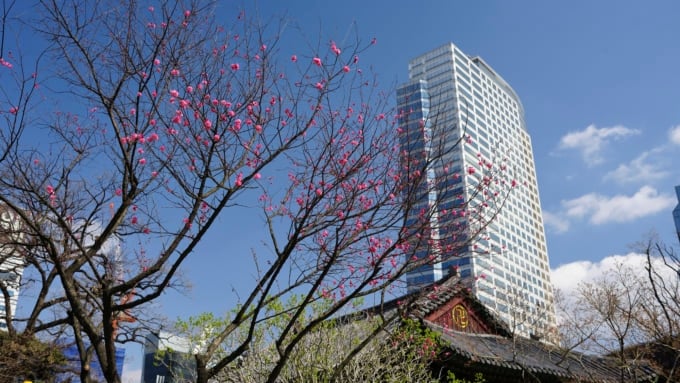
In spring, red plum blossoms bloom within the temple grounds, filling the air with their fragrance. Red plum blossoms are rare in Seoul, making them a special sight. In summer, the Lotus Festival is held.
This time, we introduced the highlights of Bongeunsa Temple in Gangnam, Seoul. In addition to its temple buildings and the Maitreya Great Buddha, its seasonal flowers are also very appealing. Since many travelers choose to stay in the Gangnam area, why not include Bongeunsa in your itinerary when visiting Seoul?
RELATED ARTICLES
REGIONS
CATEGORIES
FEATURED ON Seoul
-
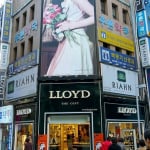
Shopping in Myeongdong! Must-Check Korean Brands Introduced!
-
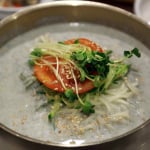
If You’re Having Lunch in Seoul’s Gourmet Battleground, Myeong-dong, This is the Place! 3 Recommended Spots
-

2 Recommended Spots in Dongdaemun for Nail Salons and Affordable Nail Supplies
-
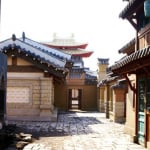
Gourmet Food and Filming Location Tours that Stir the Travel Spirit in Seoul / How to Explore Bukchon Hanok Village
-

Introducing Date Spots in Gangnam, South Korea Where You Can Enjoy Casinos and Night Views!
MOST POPULAR ON Seoul
-
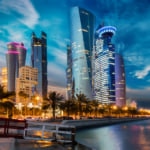 1
1Doha: Must-see Attractions in the Capital of Qatar
-
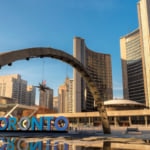 2
2Toronto: 10 Things to do in this Picturesque Canadian City
-
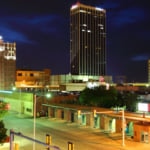 3
3Amarillo: A City Famous for It’s Amazing Canyons, Great History and Music
-
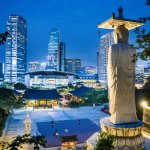 4
4South Korea: Dazzling Scenery, Rich Culture and Fascinating History
-
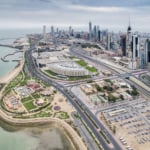 5
5Kuwait: A Country in Middle East Asia Famous for Hot Sand Dunes and Stunning Cityscape


